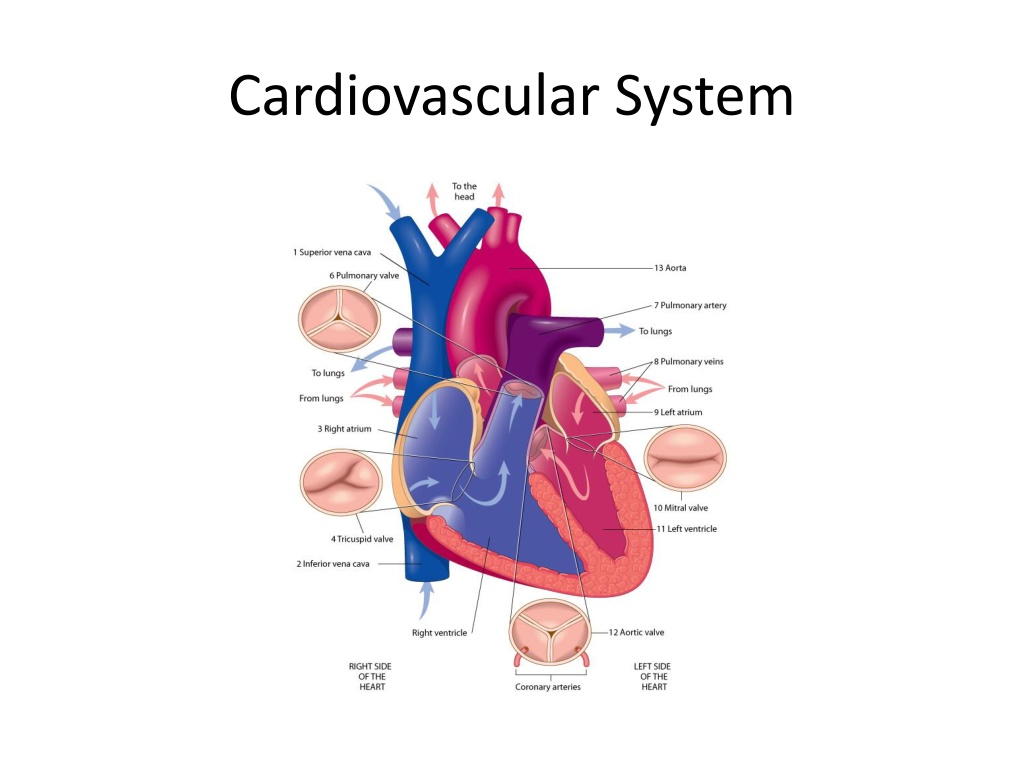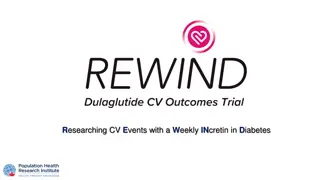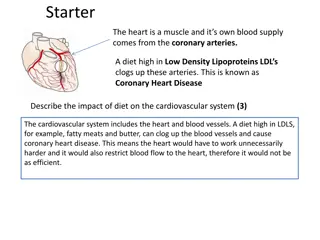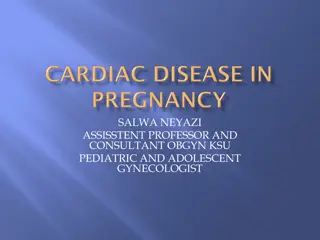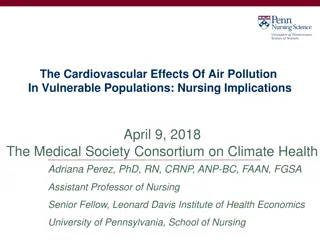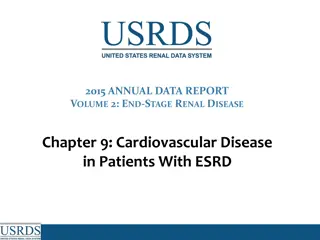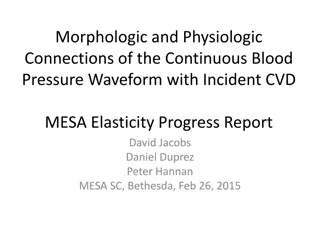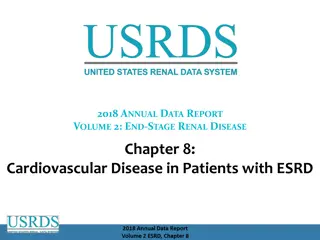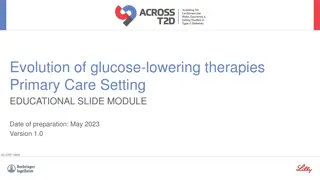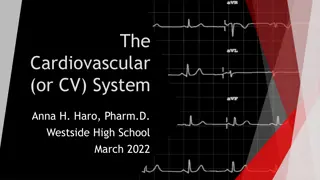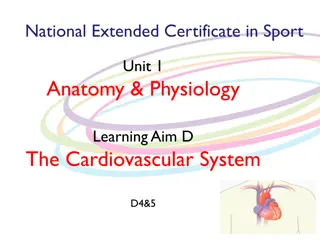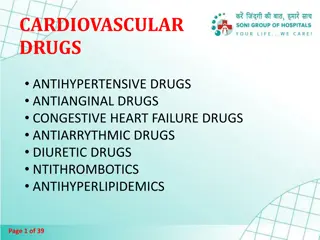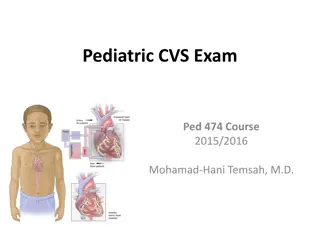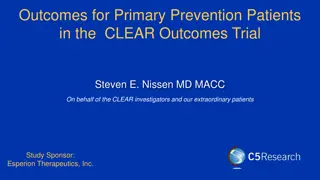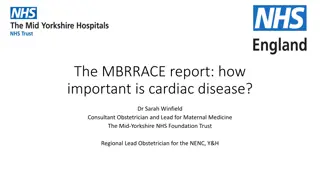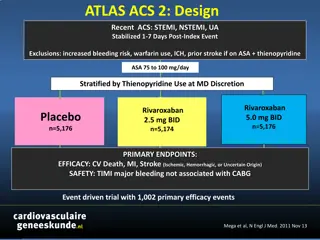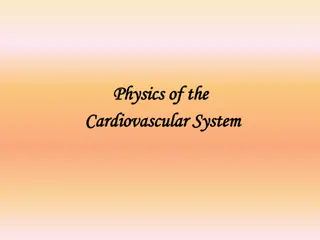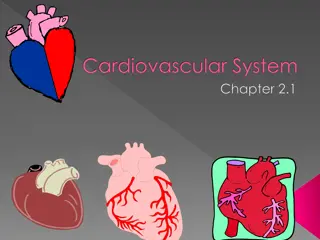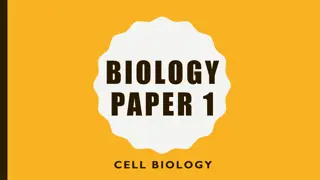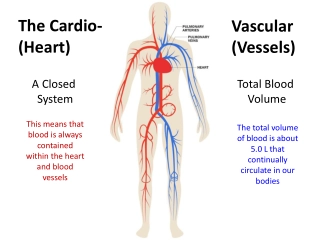Understanding the Cardiovascular System: An Overview
The cardiovascular system, comprising the heart and blood vessels, plays a vital role in delivering oxygen and nutrients to body tissues. Arteries carry oxygenated blood away from the heart, veins transport deoxygenated blood back to the heart, and capillaries facilitate nutrient exchange. Learn about the anatomy of the heart, blood circulation, heartbeat phases, heart sounds, and the conduction system. Gain insights into the intricate network that sustains life through efficient oxygen and nutrient distribution.
Download Presentation

Please find below an Image/Link to download the presentation.
The content on the website is provided AS IS for your information and personal use only. It may not be sold, licensed, or shared on other websites without obtaining consent from the author. Download presentation by click this link. If you encounter any issues during the download, it is possible that the publisher has removed the file from their server.
E N D
Presentation Transcript
Cardiovascular System: Introduction Cardiovascular system: delivers oxygen and nutrients to cells of body tissue Heart (muscular pump) Blood vessels (fuel line and transportation network)
Blood Vessels and the Circulation of Blood Arteries are the vessels that lead away from the heart. Veins have thinner walls than arteries and move deoxygenated blood toward the heart from the tissues. Capillaries are the smallest vessels. They form the point of exchange for oxygen and nutrients into body cells and waste products coming from body cells.
Blood Circulation/Systemic Circulation
Anatomy of the Heart Tricuspid valve (cusps are flaps of the valves): between the right atrium and right ventricle Pulmonary valve: between the right ventricle and pulmonary artery Mitral valve: between the left atrium and left ventricle Aortic valve: between the left atrium and aorta
Pathway of Blood through the Heart
Heartbeat and Heart Sounds Two phases of the heartbeat: Diastole: relaxation Systole: contraction The diastole-systole cardiac cycle occurs between 70 to 80 times per minute (100,000 times per day). The heart pumps 3 ounces of blood with each contraction. This means that about 5 quarts are pumped per minute (75 gallons an hour and about 2000 gallons a day).
Heart Sounds Closure of valves associated with sounds lubb- dubb, lubb-dubb lubb: closure of the tricuspid and mitral valves at the beginning of systole dubb: closure of the aortic and pulmonary valves at the end of systole murmur: an abnormal heart sound caused by improper valve closure
Conduction System of the Heart Sinoatrial node (SA node): the pacemaker of the heart Pacemaker: origin of electrical impulse causing walls of the atria to contract and force blood into the ventricles (ending diastole)
Conduction System of the Heart Atrioventricular node (AV node): This sends the excitation wave to a bundle of specialized fibers called the atrioventricular bundle or Bundle of His. Bundle of His (pronounced hiss ): Helps form conduction myofibers that extend to ventricle walls and stimulate them to contract, beginning systole. A short rest period follows. The pacemaker begins wave of excitation again. ECG or EKG (electrocardiogram): The record used to detect electrical changes in heart muscle as the heart beats.
Blood Pressure Blood pressure: The force that blood exerts on arterial walls Expressed as a fraction: systolic pressure/ diastolic pressure Example: 120/80 mm Hg Hypertension (high blood pressure) : when BP > 140/90 mm Hg
Pathology: the Heart and Blood Vessels Heart Arrhythmias (without normal heart rhythm) Heart block (atrioventricular block) Flutter * Fibrillation AF: most common type of cardiac arrhythmia, Electrical impulses move randomly throughout the atria, causing atria quiver instead of contracting a coordinated rhythm. VF: Electrical impulses move randomly throughout the ventricles. This life threatening situation may result in sudden cardiac arrest or death.
Pathology: the Heart and Blood Vessels Heart *Congenital heart disease (CHF): The heart is unable to pump the required amount of blood. In the U.S., primarily the result of high blood pressure and coronary artery disease (see next slide) Results in pulmonary edema (fluid build up in lungs) Fatal if untreated
Pathology: the Heart and Blood Vessels Coronary artery disease (CAD) *Atherosclerosis- Deposition of fatty compounds of inner lining of coronary arteries. *Thrombotic occlusion: blockage of coronary artery by clot. *Ischemia- Blood flow is decreased or stopped completely, leads to necrosis. *Necrosis: Death of part of the myocardium. *Infarction: heart attack, and area of necrosis is known as infarct.
Pathology: the Heart and Blood Vessels Coronary artery disease (CAD) Surgical therapies for CAD Coronary artery bypass grafting (CABG) Percutaneous coronary intervention (PCI)
Pathology: the Heart and Blood Vessels *Endocarditis- inflammation of inner lining of heart from bacteria. *Murmur- extra heart sound, heard between normal beats. *Pericarditis: inflammation of membrane (pericardium) surrounding the heart. Usually results from disease elsewhere in the body. *Aneurysm- widening (dilation) of an arterial wall. Danger is an aneurysm can rupture and hemorrhage.
Pathology: Heart and Blood Vessels *Raynaud disease- recurrent episodes of pallor and cyanosis primarily in fingers & toes. Intense constriction and vasospasms of arterioles often by young/healthy women. Idiopathic but triggered by; cold temps, stress, or smoking. *Varicose veins- swollen/twisted veins caused by damaged valves that fail to prevent the backflow of blood. Blood collects in veins which makes them much larger in size. Thrombosis can occur. Hemorrhoids are varicose veins near anus.
Clinical Procedures: Treatment Cardioversion (defibrillation) *Endartectomy: surgical removal of plaque from inner layer of an artery. Fatty deposits and thromboses are removed to open clogged arteries. http://www.youtube.com/watch?v=5lZItV39v_Q circulation Heart transplantation Thrombolytic therapy Transcatheter aortic valve replacement (TAVR)
Clinical Procedures: Treatment *Coronary artery bypass graft (CABG) surgery A, A section of a vein is removed from the leg and anastomosed to a coronary artery to bypass an area of arteriosclerotic blockage. B, An internal mammary artery is grafted to a coronary artery to bypass blockage. ://www.youtube.com/watch?v=3Nf6Q2skGOM
Treatment Procedures *Percutaneous coronary intervention (PCI) Includes: angioplasty (PTCA), stent placement, laser angioplasty, and atherectomy http://www.youtube.com/watch?v=N7nghr9Tp SU
